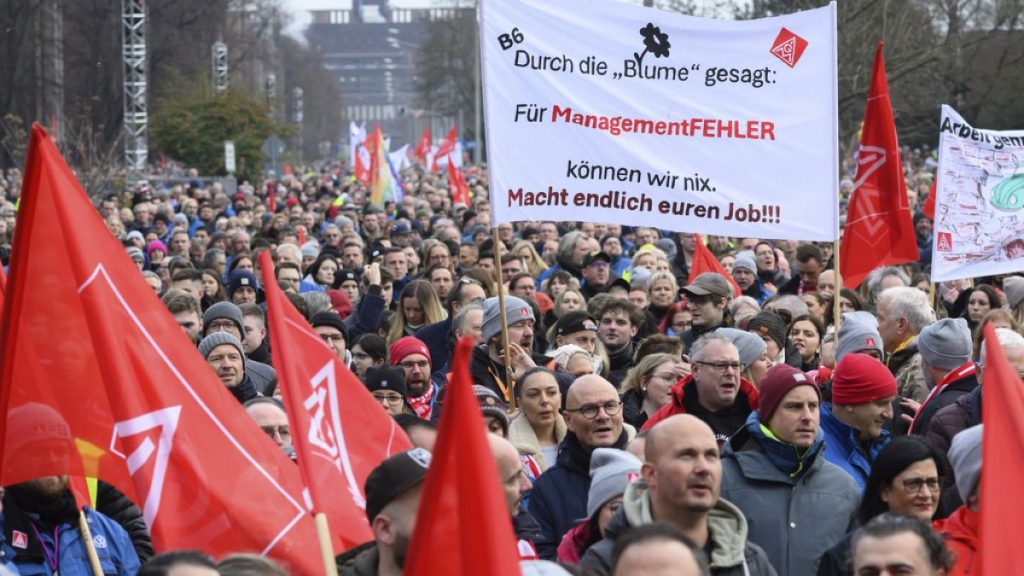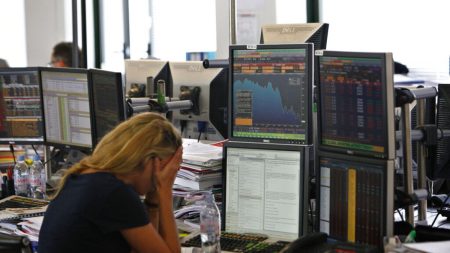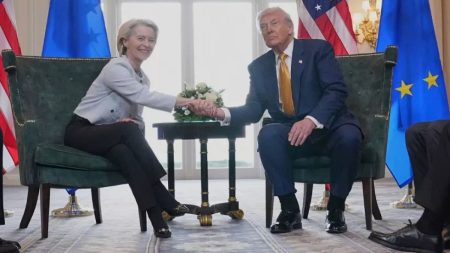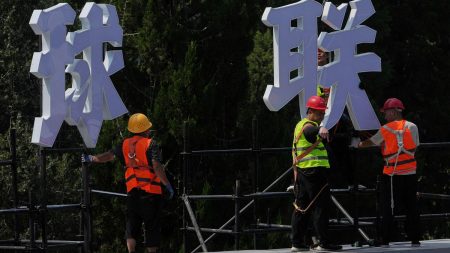The automotive giant Volkswagen finds itself embroiled in a tense standoff with its unions in Germany, as both sides grapple with the challenging economic realities facing the company. A new round of negotiations has commenced, aiming to bridge the divide over proposed cost-cutting measures, including potential plant closures and pay reductions. The negotiations follow a series of warning strikes, culminating in a massive demonstration involving nearly 100,000 employees, underscoring the gravity of the situation and the workers’ determination to protect their jobs and livelihoods. The core issue revolves around Volkswagen’s need to implement substantial cost savings, estimated at €10 billion, to navigate the turbulent waters of declining European demand and intensifying competition in the crucial Chinese market.
Volkswagen’s management argues that these drastic measures are essential to maintain the company’s competitiveness and long-term viability. They point to the necessity of reducing excess capacity and lowering factory costs, particularly labor costs, which are significantly higher in Germany than in other manufacturing hubs. The company insists that these reductions are crucial for investing in future product development and securing its position in the rapidly evolving automotive landscape, particularly with the rise of electric vehicles. This strategic imperative, they contend, justifies the potentially painful steps being considered.
However, the unions vehemently disagree with the proposed approach, arguing that the burden of cost-cutting should not fall solely on the shoulders of the workers. They have presented counter-proposals aimed at achieving significant savings without resorting to plant closures or drastic pay cuts. These proposals include reductions in dividend payouts to shareholders and cuts to management bonuses. The unions argue that all stakeholders, including management and shareholders, should contribute to the cost-saving efforts, reflecting a principle of shared sacrifice and responsibility. They accuse the management of prioritizing shareholder returns over the well-being of its workforce.
The standoff has escalated into public demonstrations of worker discontent, including a four-hour strike across nine German plants coinciding with the renewed negotiations. Thousands of workers downed tools and gathered in protests, most notably in Wolfsburg, the heart of Volkswagen’s operations and home to its headquarters. This display of solidarity sends a powerful message to management, emphasizing the strength of the unions’ resolve and their willingness to escalate industrial action if their concerns are not addressed. The unions have even threatened further strikes in 2025 should an acceptable agreement not be reached.
The situation has also drawn the attention of German Chancellor Olaf Scholz, who has publicly urged Volkswagen to avoid plant closures. While acknowledging that the final decision rests with the company and its employee representatives, Scholz’s intervention highlights the political sensitivity of the issue and the broader economic and social implications of potential job losses. The government’s concern underscores the significance of Volkswagen as a major employer in Germany and the potential ripple effects of plant closures on the national economy.
The negotiations are at a critical juncture, with both sides holding firm to their positions. The unions remain steadfast in their demand for a fairer distribution of the burden of cost-cutting, while Volkswagen management insists on the necessity of its proposed measures to secure the company’s future. The outcome of these negotiations will have significant implications not only for Volkswagen’s workforce but also for the broader German automotive industry, serving as a potential precedent for how other companies address the challenges of a rapidly transforming market. The possibility of further strikes looms large, adding to the pressure on both sides to find a mutually acceptable solution. The coming days will be crucial in determining whether a compromise can be reached or whether the conflict will escalate further, potentially disrupting production and impacting the company’s performance.














